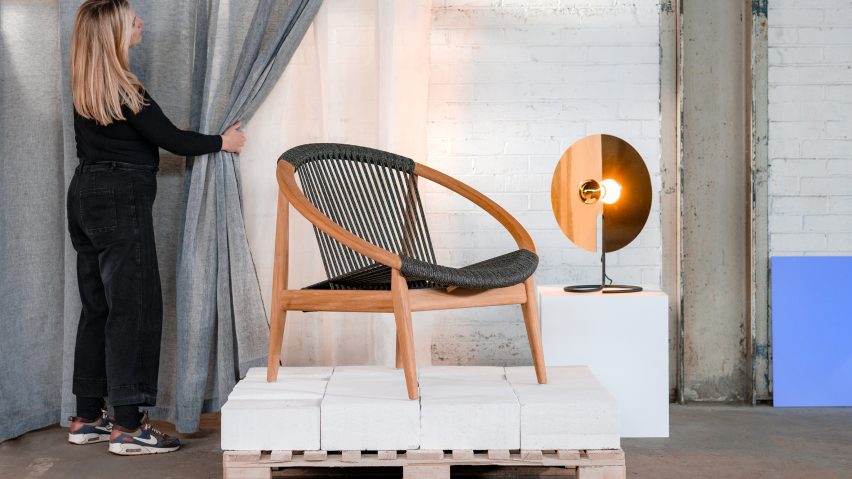
Dundee Design Festival sets out to become world's most sustainable
Dundee Design Festival has outlined the sustainability strategy that it hopes will make Scotland's largest design event the world's most sustainable design festival.
Clean energy, electric transport and an entirely tinned beverage offering are all part of the Dundee Design Festival's (DDF) sustainability strategy, while its most ambitious initiative centres on materials and circularity.
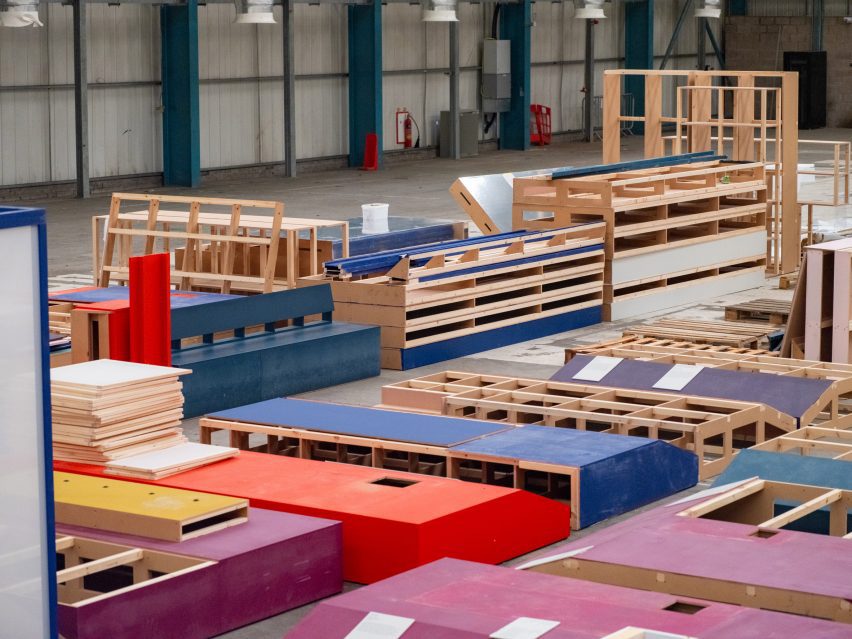
The festival – Scotland's largest design event – has committed to using a maximum of 30 per cent new materials in constructing its entire event site, which will be located at the Michelin Scotland Innovation Parc in September.
This target will include stands for over 100 participating designers, as well as installations by Donna Wilson, Timorous Beasties, Gabriella Marcella and AdesignStorie.
Some of the used materials will come from the V&A Dundee's Tartan exhibition, some from Edinburgh craft and design gallery Bard and some from local suppliers, and everything is intended to have a further life after the event.
"We've created a monster" with wasteful design festivals
The DDF's sustainability commitment is the vision of new creative director Stacey Hunter, whose curatorial studio Local Heroes has been behind exhibitions such as 2018's Made in Glasgow.
Hunter criticised the "wasteful" nature of design fairs and festivals, and said that her past feelings of discomfort over this fact had almost made her quit curation.
"I think in the quest to seem professional and to make a beautiful, vivid design, festivals have been using materials like there is no cost to the environment," Hunter told Dezeen.
"People are not really thinking about the onward use of things that they're having manufactured."
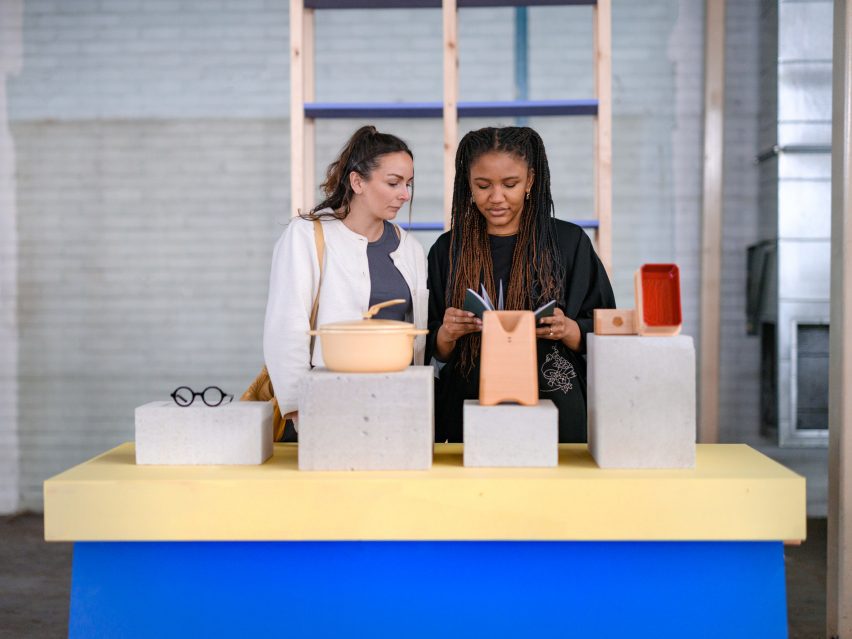
She said it was common in the sector to commission completely bespoke elements that were "only useful in that moment".
"That doesn't make sense to me. It's not the way it should work," she said. "We've created a bit of a monster."
Materials reused in "intuitive" working process
The DDF is working on its design using materials from the V&A's Tartan exhibition and Bard's The Grit and the Glamour, which are currently stored on-site at the Michelin Scotland Innovation Parc and form an archive that exhibitors can access.
Hunter said that everyone involved was working in a "really intuitive way", with exhibitors identifying materials they wanted and organisers marking them with a Post-It note to show they are taken.
To supplement this, Hunter has also developed a wider materials palette for the festival based entirely on items that can be borrowed or reused, including breeze blocks, Heras fencing, scrap timber and bricks.
However, there is more to the process than simply substituting new materials for old; Hunter and her team are also getting creative with the exhibition design to use less overall while still giving shape to the site's factory-like, 3,000-square-metre spaces.
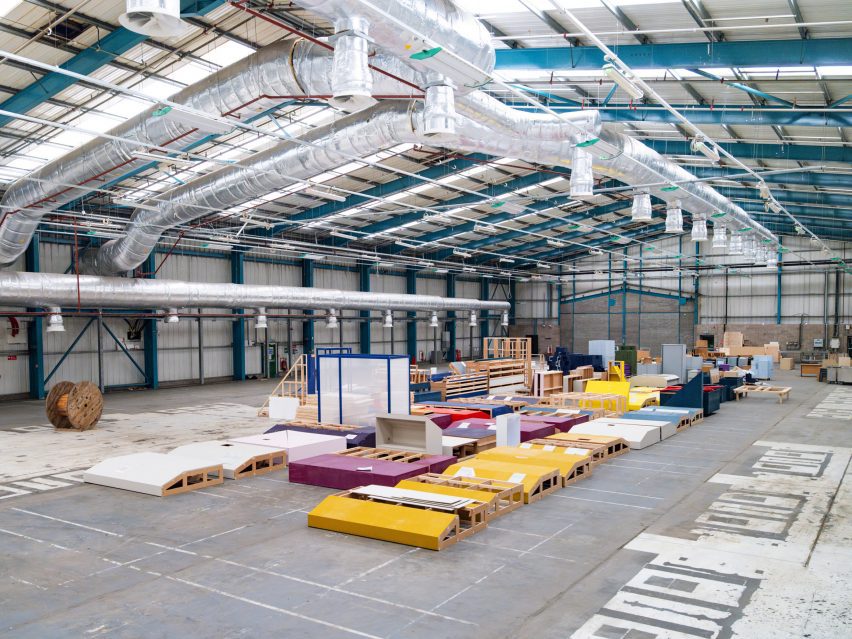
"The design dilemma is how do you get, from a visitor experience point of view, the massing and the height and the density and the porosity that's exciting visually, if you don't build loads of walls and structures?" said Hunter.
To that end, Hunter is working with designer and fabricator Louise Forbes and lighting designer Emma Jones. Lighting will be one of the tools used to demarcate space, borrowing techniques from interior design.
In addition to being more sustainable, Hunter said that she felt a "super minimal way of presenting" was more "modern and fresh".
"I think that the idea of putting design on a plinth in some respects detaches it a little bit or makes it feel like you're signifying that it's an artwork when it's not," said Hunter. "It should be able to exist in its role as a design object."
Toilets among targets for sustainable overhaul
The DDF's sustainability strategy extends to every aspect of the festival. The organisers have made a new partnership with electric bus company Ember, which will provide zero-emissions transport to the site for visitors from Edinburgh, Dundee and Glasgow.
The buses will be able to recharge at the Innovation Parc, where there is renewable energy from on-site wind turbines. These provide all of the power to the venue.
Hunter claims the festival has put sustainability first in every aspect of its decision-making, leading to outcomes such as an all-canned beverage offering in its bars – a more sustainable choice as aluminium cans are lightweight to transport and endlessly recyclable.
There will also be compostable toilets rather than chemical-based portaloos, if the logistics can be managed.
The only thing that has not been decided in this way is the list of exhibitors, who are free to display any work they want, with Hunter saying she didn't see herself "in the role of a gatekeeper" over what counts as sustainable.
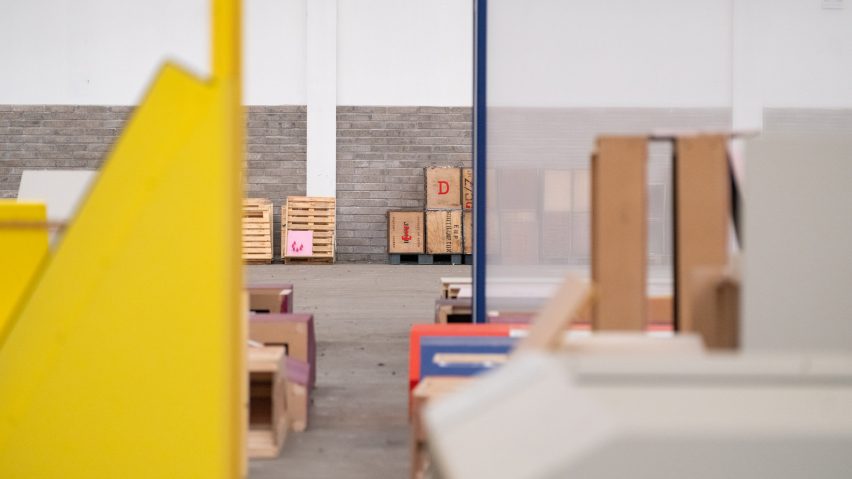
She said that for all other decisions, however, the team had had to ask "what is the most sustainable way to do this?", and that this had helped to make the organisation more efficient.
"What we've found is that if you parse every conversation through a sustainability lens, it cuts out all the noise and prevarication," said Hunter. "Ultimately, everyone's on the same page, they get what the values are, and it just speeds up the process."
She said that the complexity was further eased by the organisation taking a common sense approach to sustainability, choosing that which was used, renewable or recyclable but not delving deep into the data comparing statistics on carbon emissions, water use or toxicity.
"We're not experts in sustainability," she said. "We're not scientists. We're on a journey."
Dundee is a UNESCO City of Design, the only such designated city in the UK. The V&A Dundee opened there in 2018, in a building designed by Kengo Kuma.
The Dundee Design Festival is on from 23 to 29 September at the Michelin Scotland Innovation Parc. For more events, exhibitions and talks in architecture and design visit Dezeen Events Guide.
Photography by Grant Anderson.